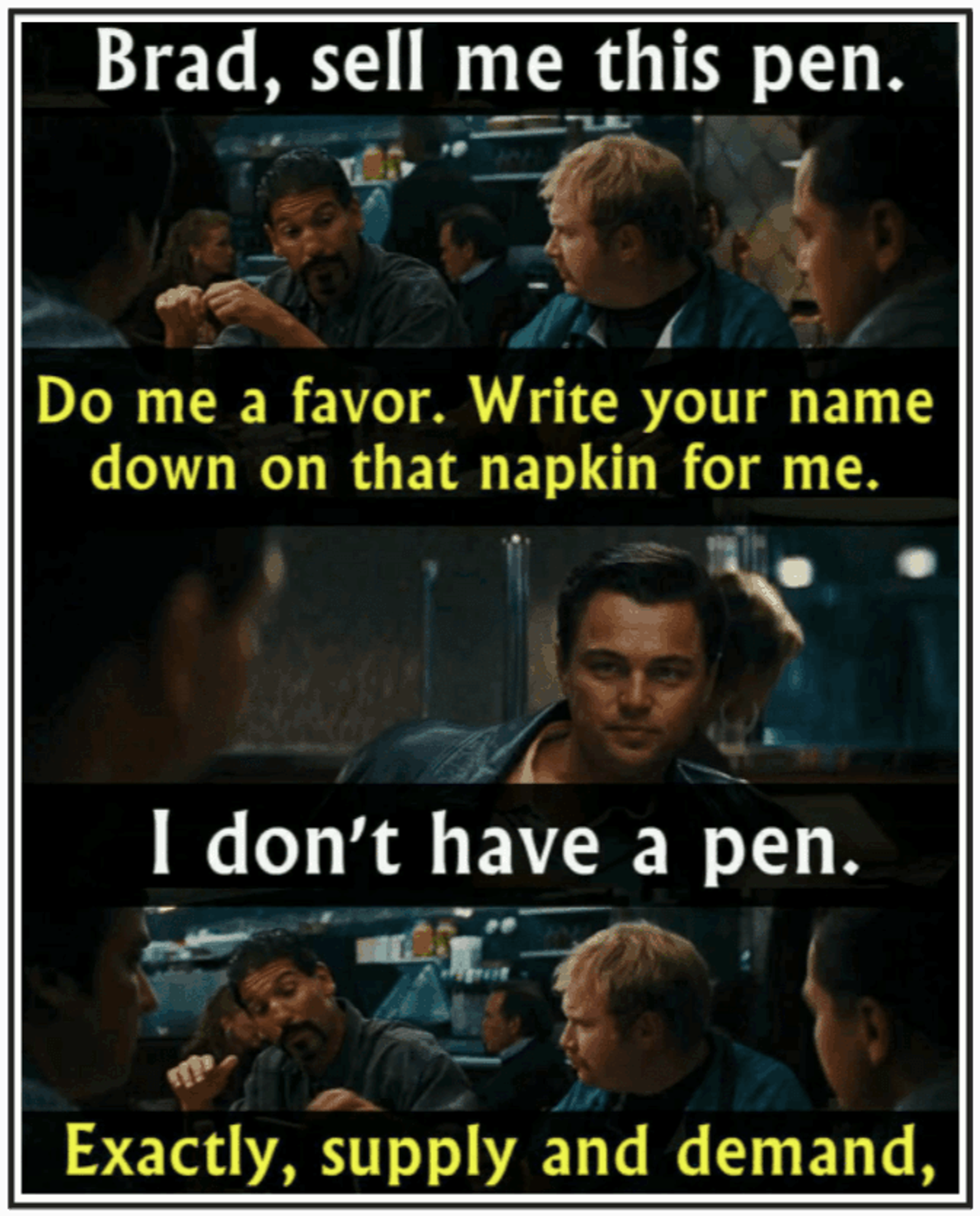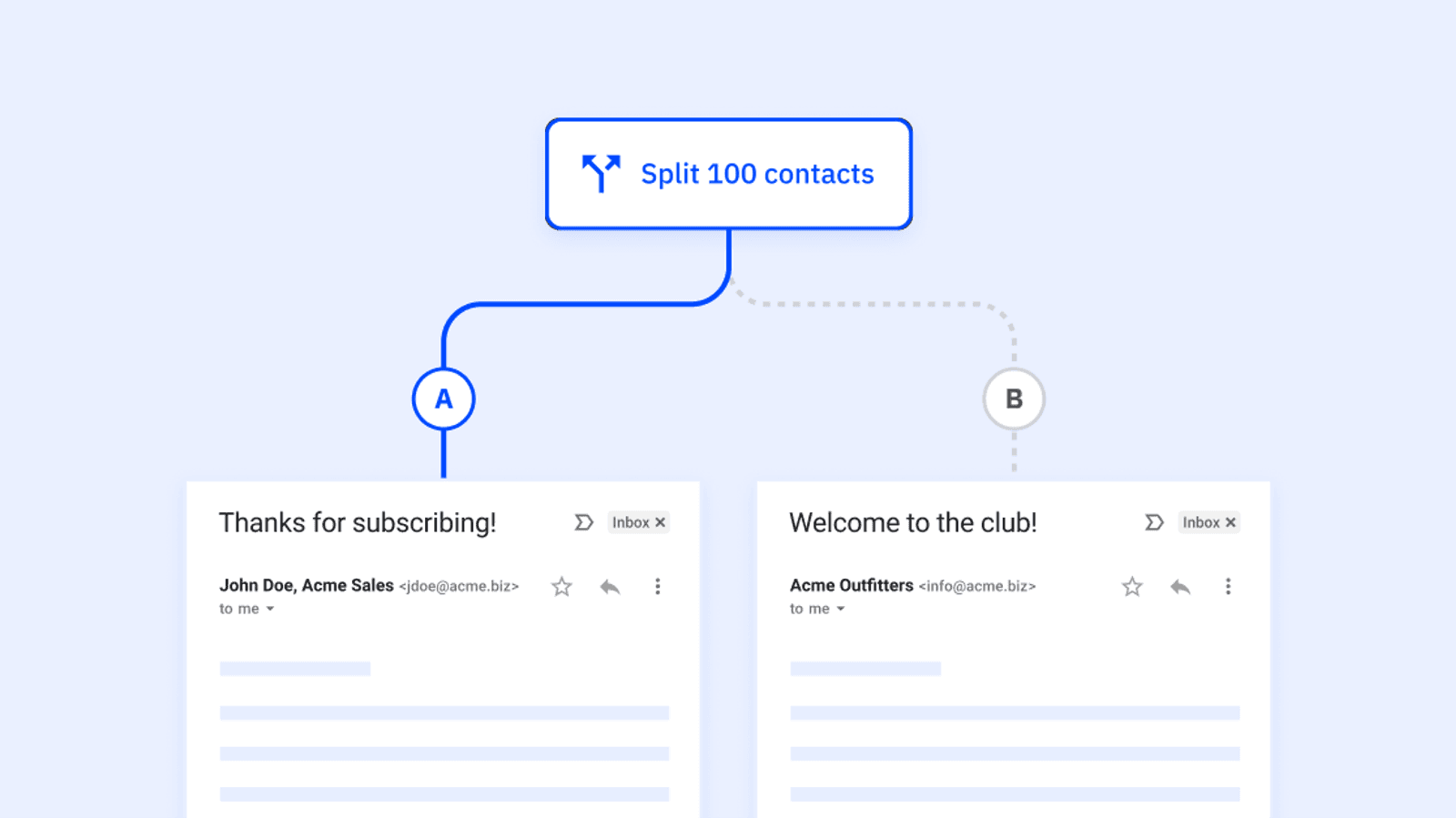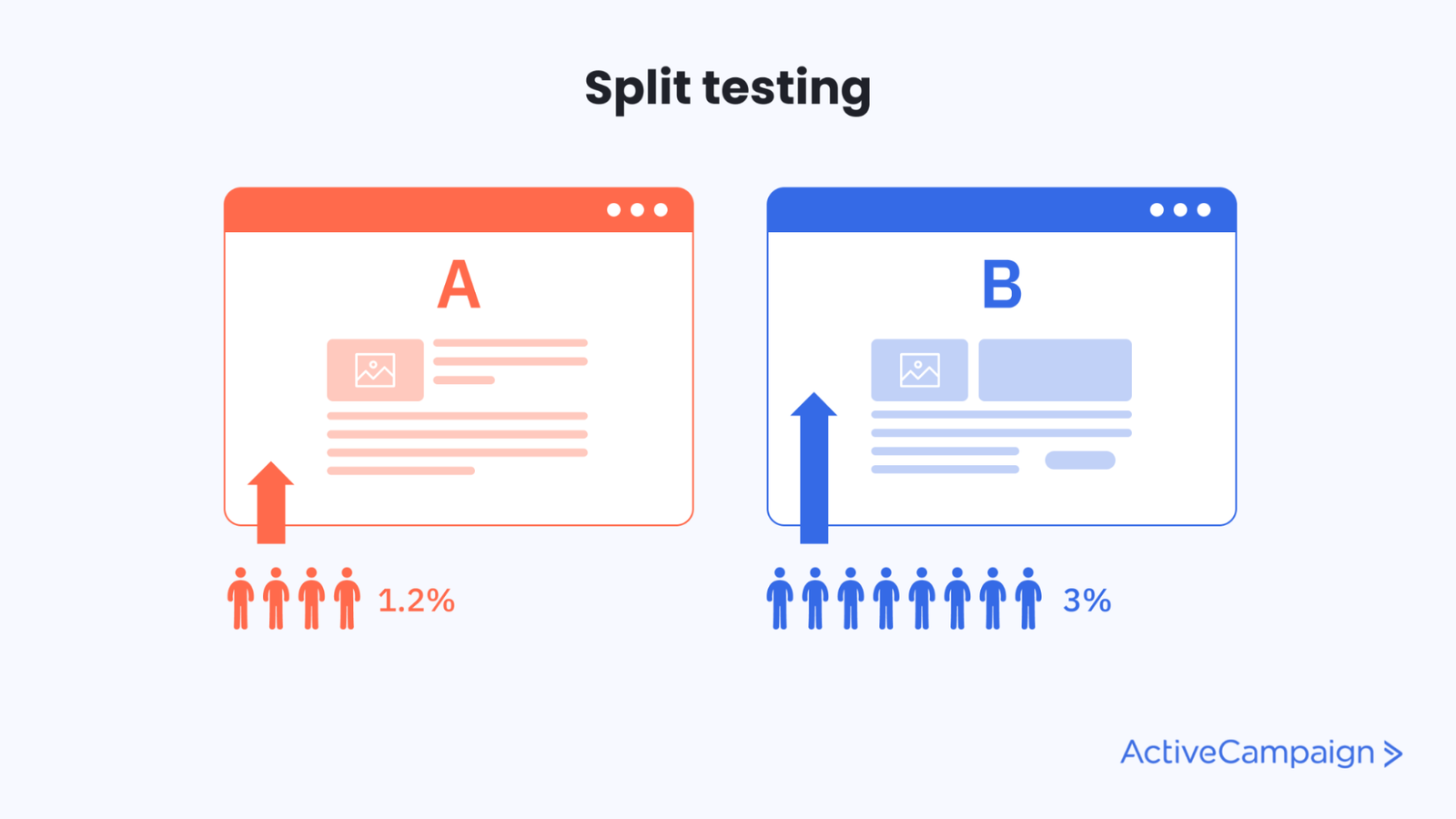“What does your company do?”
“Why would I switch over to you?”
“I wish there was an easier way.”
When a prospective customer says something like this it’s a sign of purchasing intent. They’ve thought about buying. They need a new service, a new product, a new solution.
The only question is: who are they going to buy from?
When you see the buying signs from a potential customer you need your sales pitch ready. A strong sales pitch could be the difference-maker that ensures the answer to that question is ‘you’.
What is a sales pitch?
A sales pitch is a planned line of talk that salespeople use to persuade people to purchase a product or service. A sales pitch is a commercial for your business that tells your prospective customers why they should buy from you.
A sales pitch can be:
- An introduction of a product to an audience that knows nothing about it
- An expanded description of a service that an audience has expressed interest in
- A planned presentation designed to initiate and close a sale
In this post you’ll learn:
- 7 Sales pitch examples to help you sell better
- What makes a successful sales pitch
Try it now, for free
7 Sales pitch examples to help you sell better
What does a good sales pitch look like in action? Below are 7 sales pitch examples that can help you sell.
- The art of storytelling (Tommy Boy)
- It’s not what you think it does, it’s what it actually does (Mad Men)
- Understanding your customer’s needs (The Wolf of Wall Street)
- Don’t sell a product, sell an experience (Mark Cuban)
- Sell with social proof (42)
- We don’t just solve your problems, we create your customers (ActiveCampaign)
- Show, don’t tell (DoorBot)
1. The art of storytelling (Tommy Boy)
All jokes aside, there are few better ways to create a memorable connection than by telling a good story.
If “Tommy Boy” were real life, I don’t think Helen would forget her encounter with Tommy and his ‘pretty new pet’.
Tommy’s pitch is silly, but it’s effective. Instead of begging Helen to turn the fryers back on, or explaining to her the extent of his hunger and how the chicken wings would solve his problem – he tells her a story.
He makes an early connection, brings in a visual, and ties it all together in the end. It’s not obvious at the start, but Helen is the hero of the story – she has the power to solve his problem and does.
Stories are 22x (!!!) more memorable than facts alone. Stories cause “invisible thinking”, or the state where individual thought ends and the story takes over for your brain.
Tommy’s use of the dinner roll (while unorthodox) makes his story even more memorable. Visuals are processed 60,000x faster than text and are easier to remember!
2. It’s not what you think it does, it’s what it actually does (Mad Men)
Peggy knows the value of a good story. The story’s main character is a younger version of herself, but the hero is still the customer, Peggy’s mother.
She makes a connection– Popsicles aren’t just a frozen treat on a hot summer day. They’re delicious, but it’s more than that. It’s a ritual. It’s an experience. It means something to the customers. It’s love.
Don’t underestimate the buying power of emotional response. Emotional factors account for up to 70% of economic decision-making.
Peggy’s pitch is practiced, but it’s human. She pauses and lets her prospect respond, then goes on to emphasize that a Popsicle is more than meets the eye. She knows that what a popsicle means is different than what a popsicle does.
Marketing positioning consultant April Dunford recently touched on this topic at the Chicago-based conference, Content Jam. In her presentation, she shared a story about how her company’s “database” wasn’t selling at all, despite the incredible insight it could bring to businesses through data analytics.
The problem was that it wasn’t really a database at all! It was a business intelligence tool.
They reframed their sales pitch to what the product actually did. The result?
A massive increase in sales and eventual acquisition.
3. Understanding your customer’s needs (The Wolf of Wall Street)

It’s not about you, it’s about them and what they need. (Source)
Your potential customers don’t care about you, your story, or even your product. They care about themselves and their problems.
- Can you solve their problem?
- Can you meet their needs?
- Can you help them?
This short (but powerful) sales pitch in The Wolf of Wall Street (2013) teaches us a valuable lesson: don’t sell the product, sell the future where your prospect’s needs are met. Similarly, when you prepare a proposal after your pitch, it's crucial to ensure it resonates with these identified needs, presenting your solution as the perfect fit for their unique challenges.
“Last year over one million quarter-inch drills were sold—not because people wanted quarter-inch drills but because they wanted quarter-inch holes. When you buy an automobile you buy transportation. When you buy a mattress you are buying comfortable sleep. When you buy carbon paper you are buying copies.” – Leo McGivena, Publicity Manager of “The Daily News” (1947)
Brad didn’t sell the pen – he sold the ability to write.
- Don’t sell the drill, sell the beautiful painting hanging on the living room wall
- Don’t sell the car, sell the freedom of the open road
- Don’t sell the mattress, sell the feeling of waking up after a great night’s sleep
- Don’t sell the paper, sell the phone ringing off the hook because everyone has seen your flyer
Take it from Jordan Belfort himself,
“The real answer is, before I'm even going to sell a pen to anybody, I need to know about the person, I want to know what their needs are, what kind of pens do they use, do they use a pen? How often do they use a pen? Do they like to use a pen formally, to sign things, or use it in their everyday life?
The first idea is that when you say 'Sell me this pen,' I want to hear [the salesman] ask me a question. 'So tell me, how long have you been in the market for a pen?' I want them to turn it around on me and start asking me questions to identify my needs, what I'm looking for.
And if you do that, people don't know what to do. Next thing, he is answering, and now I'm controlling the conversation, finding out exactly what he needs.” – Jordan Belfort (Source)
4. Don’t sell a product, sell an experience (Mark Cuban)

Mark Cuban used this sales pitch in his first few months as the owner of the Dallas Mavericks (view here)
Mark doesn’t list the features of attending a Dallas Mavericks game:
- Competition
- Entertainment
- Expensive parking
- Display of amazing athleticism
- Overpriced concessions
- A (potentially) life-changing halftime show
- The kiss-cam
He talks about what it means to come to a game. It’s an experience.
It goes beyond what you get at the movies or at McDonald’s. It’s a priceless memory that you make with your family. Don’t settle for the status quo, go out and do something! Experience something.
Consumers are moving from a “society of stuff” to a “society of experiences”. In a recent study by Expedia, 74% of US respondents said they would rather spend money on experiences than products.
The experience of the product or service is now more important than the product itself– so don’t sell the product, sell the experience of the product! Sell the feeling and the memory. That’s what people will remember.
“I've learned that people will forget what you said, people will forget what you did, but people will never forget how you made them feel.” – Maya Angelou
5. Selling with social proof (42)
Only 18% of buyers trust and respect salespeople.
According to a study by SurveyMonkey, 65% of consumers say that trusting a brand has “a great deal” or “a lot” of influence on a purchasing decision. Another 27% of consumers said trust had at least “some” influence.
This presents a challenge for the salesperson: how do you establish trust in a sales pitch when 80+% of consumers don’t think you’re honest?
One answer is social proof.
A movie trailer is a visual sales pitch designed to build excitement and drive attendance to the movie.
Consumers know this and want a little more evidence that the movie they’re going to spend their time and money on will be worth it.
Enter social proof. In the above trailer for “42”, we’re told that it’s the #1 movie in America. We’re then told how great the movie is through the words of critics:
- “Full of grit and edge”
- “A must-see film”
- “Will make you believe in heroes again”
These reviews of the movie are social proof – outside evidence that the movie is worthwhile.
Pro tip: Arm all of your sales development reps (SDRs) with this kind of content to use in their relationships.
When you use social proof in a sales pitch, you’re saying to the prospect, “Don’t take it from me– take it from people who have already bought it and found it useful.”
91% of 18-34 year olds trust online reviews as if they came from their trusted friends. Consumers read an average of 10 reviews before feeling comfortable enough to purchase.
Social proof can take the form of:
- Reviews
- Customer testimonials
- Stats on customer satisfaction
- Expert opinions
- Number of customers served
6. We don’t just solve your problems, we create your customers (ActiveCampaign)
It depends on your use case but we help to create meaningful experiences for your customers and subscribers through our tool. ActiveCampaign allows you to automate messaging based on specific behaviors and actions that your subscribers are taking.
We’ve learned the hard way that an ambush conversation like this isn’t a fair setting to us or your team given the importance that this has for you or the organization.”
The above is a sales pitch from ActiveCampaign’s outbound business development representative (BDR) team.
This sales pitch goes beyond solving your customer’s problems.
- It takes the solution to those problems and shows further benefits
- It’s customer-centric by focusing on the customers of the potential customer
- It uses the 85,000+ customer base as social proof
- It’s concise
- It allows for variation depending on the prospect’s business and pain points
- It features the negative reverse-selling tactic of objecting to your own pitch
“This isn’t a fair setting to us or your team given the importance that this has for you or the organization.”
It might seem backward to minimize the importance of the sales pitch during the sales pitch, but it builds credibility with the prospect. It shows the prospect that you understand their point of view and begins to build trust.
7. Show, don’t tell (DoorBot)
Jamie Siminoff, founder of Ring, shows off his product to the sharks on ABC’s Shark Tank
Recognize this product? You might know it by a different name now. You might even have one! In February of 2018, Ring (formerly DoorBot) was bought by Amazon for $1 billion.
So it might be surprising to learn that DoorBot’s pitch on Shark Tank ended without a deal, but it all worked out for Jamie in the end.
Deal or no deal (wait, wrong show) this DoorBot pitch shows it all:
- Show the problem
- Show the solution
- Show the reliability
- Show the opportunity
- Show who’s at your door
Jamie doesn’t start by asking the sharks,
“Don’t you hate when you don’t know who’s at your door?”
He knocks at the door and they ask who it is. He shows them the problem before he’s told them anything about the product!
Once the problem is established as real and relevant, he shows the solution. His product is reliable, and he proves it. Even Aaron Kaurse, Scrub Daddy’s founder, did the same.
Then he connects it all together with a story. Every home has a doorbell. The doorbell hasn’t changed in 100+ years. Millions of homeowners are spending billions of dollars on home products that connect to smartphones.
In a few sentences, he shows the opportunity.
Ernest Hemingway wrote,
“Show the readers everything, tell them nothing”
What makes a successful sales pitch?
There are 4 rules to craft a successful sales pitch:
- Focus on your customer, not on your company
- Frame the pitch as a story
- Prove it
- Practice your pitch but don’t rehearse it
1. Focus on your customer, not on your company
Your sales pitch needs to focus on one thing: What you can do for them.
Nobody likes “being sold” to. When you push a sale that’s focused on how great your business is, you create a situation in the prospective buyer’s mind where you’re the winner and they’re the loser.
Instead, focus on your customer.
- “Our product is revolutionary” → “You’ll save hours every week to focus on other areas of your business.”
- “Our customer service is fantastic” → “You’ll never wait for a support rep”
- “We solve the problem by…” → “You’ll never have to worry about those problems again.”
A recent study by Edelman shows that 81% of global consumers (80% of US consumers) say that trusting a brand is a deciding factor in a purchasing decision.
“We’re returning to the way people have ALWAYS wanted to buy from us – person to person. Humans buy from humans. And now you have the opportunity to humanize your company and join in the commercial renaissance, too.” – Mark Schaefer, author of Marketing Rebellion: The Most Human Company Wins
2. Frame the pitch as a story
Stories help you sell.
Stories connect us to our humanity. Yuval Noah Harari, author of best-selling books Sapiens and Homo Deus, asserts that humans owe their rise, in large part, to storytelling.
“Yet in truth, the lives of most people have meaning only within the network of stories they tell one another.” – Yuval Noah Harari in “Homo Deus”
How do stories help you sell?
- Stories activate areas in the brain as if you were experiencing them in real life– stimulating emotional response, and sticking in your memory
- Consumers rely on emotions more than information when evaluating brands
- 63% of attendees remembered a story from a presentation while 5% remembered a statistic
The key to crafting a memorable story is problem-solving. Your customers have a problem or pain point. Your offer is the answer to that problem. Tell the story that describes their problem and how they solve it with your offer.
“If your story describes their problem better than they can describe it themselves, they will automatically assume you have the best solution.” – Chris Orlob of Gong.io
This is your unique selling proposition (USP). Your USP describes the benefit of your offer:
- How you solve your customer’s problem
- The result of solving the problem
- What distinguishes you from the competition
Your sales pitch story is about them, not you. Ann Handley said it best,
“Make the customer the hero of your story.”
3. Prove it
Support your sales pitch with results. Your story tells the prospect about the results of your product or service. Show them the effects of using your solution.
What qualifies as reliable proof?
Testimonials give your potential customers proof from their peers that your solution works.
- 84% of people trust customer reviews as much as their own friends
- 90% of people trust recommendations from a peer, 70% trust recommendations from someone they don’t even know
Customer success results give your potential customers measurable proof, and help set expectations.
- In 2017, 78% of consumers used case studies to research before making a purchase
- Results help potential customers imagine themselves in a future scenario where they experience those results
Social proof
- Naveen Amblee and Tung Bui's study reveals that the presence of social proof makes products twice as likely to be purchased than without it.
- Media mentions, integrations, ratings, and reviews make you credible through third-party validation.
4. Practice your pitch but don’t rehearse it
If you practice your sales pitch beforehand, you’ll sound confident and knowledgeable. You don’t want your potential customers to think that it’s your first time going through it. If you sound like you trust what your pitch says, so will a potential customer.
On the flip side, too much practice can make your sales pitch sound rehearsed. If your pitch sounds like something that a million other people have heard before, it can make you seem inauthentic and make a potential customer less interested in listening.
What’s the difference?
Practiced means:
- Polished
- Clean
- Concise
- Efficient
- Conversational
- Knowledgeable
You know what you’re saying and where you’re going. But practice also means accounting for variation.
A practiced pitch allows for changes to certain aspects of the pitch based on:
- The situation
- Your prospect’s business
- The prospect themself
A rehearsed sales pitch is:
- Canned
- Unnatural
- Robotic
- Rigid
When the pitch crosses into ‘rehearsed’ territory, the sales rep focuses more on word order and less on the prospect. There’s no variation or conversation, no going off-script. There’s only the next line. One way to overcome this is by becoming a true product expert. That starts with product training but also requires extensive conversations with SMEs and/or hands-on product use.
As Chris Orlob said,
“Your language will get you relegated to the person you sound like.”
If you talk like an executive, you’ll get to talk to one. If you talk like a sales rep, you’ll have to try to sell to someone with no buying power.
A quick note on cold calls
Thinking of sales pitches only in terms of the "cold call" can be a huge mistake.
In a cold call scenario, you only have (maybe) 30 seconds to get their attention.
Likely, less than 5 seconds if they don't already know you.
Following the examples above or using some "template" over and over might get some results, but not anything to write home about.
Below are the 4 core aspects of your cold sales calls more compelling.
Conclusion: Make your sales pitch more human
Successful sales pitches make a connection on a human level:
- Emotion
- Storytelling
- Empathy
- Authenticity
The examples above use these in some capacity to make a connection with their prospects.
Close sales with ActiveCampaign
ActiveCampaign's suite of sales software will help your sales team get organized, focus on the right customers, and increase your conversions.
Our customizable CRM lets you keep track of each lead and customer as they move through the sales funnel. It includes features like:
And much more. Interested in seeing how ActiveCampaign can improve your sales performance? Try it out for free today, or request a demo.

“There are 3 major components in play when you are trying to engage with a potential buyer. The first is empathy. You need to let your buyer know you understand their challenges.
The second is credibility. You also need to let your buyer know you have enough information at hand that a conversation with you would be valuable.
Finally, you need to arouse curiosity. If what you have articulated is not interesting then all the rest goes out the window. Humans win in the conversation game. Remember that.”








